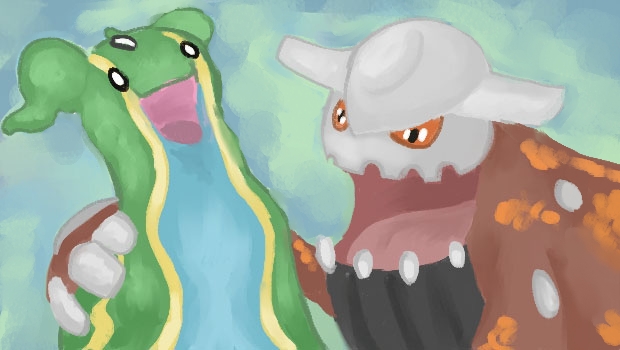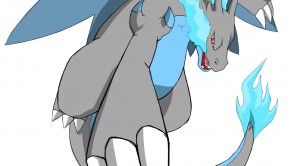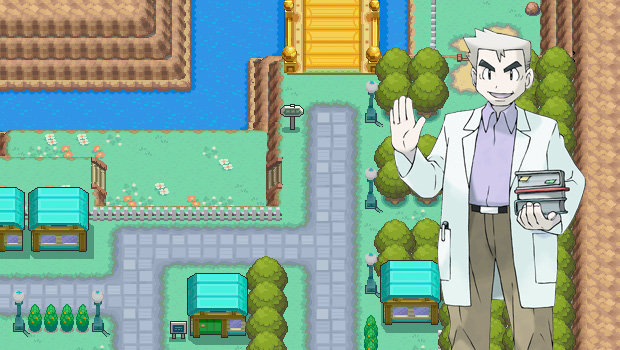Plaid Enterprises: 2013 Philadelphia Masters Team Analysis
I know, I know. This isn’t what you expect to see from me, your indefatigable, intelligent, and witty Editor-in-Chief, but little do some people know, when I’m not brewing up new, terrible puns for the titles of Nugget Bridge articles, I also play Pokémon. While my official record is full of “could’ve beens” and “should’ve beens,” including my 6-2 final rating and 18th placement at Philly last month, I’m quite proud of the work I’ve put into this team and, as Editor-in-Chief, I can 100% abuse my privelege and force this upon my readership.
The team began with a simple premise as Scott and I were tossing around ideas for Regionals teams: “Wolfe’s team is cool, but wouldn’t it be cooler with Gastrodon?” Levitate Heatran is an undeniably strong Pokémon, but I was never sold on removing Heatran’s Water weakness with Sunny Day. Wouldn’t it work better with a Gastrodon completely negating Heatran’s Water weakness? I decided that this was an idea I wanted to run with and ended up with the team you see now.
I’ve really enjoyed playing this team as it’s a complete shift in how I normally play, as it’s full of bulky Pokémon that don’t nuke the opponent so much as wear them down in a war of attrition. It gave me some new insights into how I play the game and is, I think, an especially good team for learning concepts like threat identification and identifying win conditions. It’s not perfect — thanks to Nugget Bridge I wasn’t able to test enough things for my final slot, for example — but I’m very proud of it.
The Team
![]()
Heatran (M) @ Leftovers
Trait: Flash Fire
EVs: 212 HP / 108 Def / 4 SAtk / 36 SDef / 148 Spd
Bold Nature (+Def, -Atk)
– Heat Wave
– Earth Power
– Substitute
– Protect
Heatran is, of course, the star of this team, and the rest of the members are just the supporting cast, all working towards making conditions better for Heatran to sit and wall the opposition. The moveset here is just a standard Substitute Heatran, but I opted for a far bulkier Heatran than any other Heatran that I’ve seen so far. For me, the most important thing that Substitute Heatran pulls off is walling the opposition. To that end, keeping a Sub up as long as possible and being able to create as many Subs as possible are the top priority for this EV spread. 212 HP puts Heatran just over the Substitute/Leftovers threshold, allowing me to create four Substitutes with 1 HP remaining, while the Defense and Special Defense EVs add extra bulk to those Substitutes, in particular the Defense allowed Heatran’s Substitutes to survive max Attack Tyranitar and Terrakion’s Rock Slides more than half the time.
Choosing Leftovers for this Heatran was a no-brainer to me. I knew I wanted to make this Heatran as bulky and difficult to take down as possible, and there’s no better way to do that than to slap Leftovers on a Pokémon — especially one that’s immune to Sandstorm damage. With smart Substitute and Protect play, I could gain back a not insignificant amount of health to either create more Subs or just stick around. After some key threats were eliminated, the Substitute/Leftovers engine was very hard to stall.
As compared to some of the more prominent Heatran this ruleset has seen — I’m thinking here of Wolfe and Philly champ Matt S.’s — my Heatran is a lightweight. With only a pittance invested in Special Attack, Heatran isn’t really hitting very hard — depending on the Tyranitar spread Earth Power could be anywhere from a 3 to a 4HKO. That wasn’t Heatran’s role on the team, though. The team was designed to set up a situation where the opponent can’t deal enough damage to Heatran to break Leftovers recovery while Heatran slowly whittled the opponent down. In playing with this team, I had to work to identify threats to Heatran in Team Preview and eliminate or neutralize them with the rest of the team so that my opponent just cannot break through.
![]()
Cresselia (F) @ Sitrus Berry
Trait: Levitate
EVs: 252 HP / 100 Def / 28 SAtk / 124 SDef / 4 Spd
Calm Nature (+SDef, -Atk)
– Psyshock
– Icy Wind
– Light Screen
– Skill Swap
The Pokémon that did the best job of this was Cresselia. Obviously, Cresselia provides the most support to Heatran (and thus, the team) by way of Skill Swap, granting Heatran an immunity to its 4x Ground Weakness. However, Skill Swap, and the rest of the set in general, is not solely relegated to supporting Heatran. Light Screen both allows Heatran’s Subs to survive strong neutral Special attacks (like Thunderbolt) and provides general team support, especially against Surf teams. Icy Wind allows Heatran to get its Subs up before threatening attacks, but it also hits Dragons hard and can allow for Metagross to get the jump on an opponent unexpectedly.
Psyshock and this Cresselia spread are a bit interesting. I had originally been using a much more offensive Cresselia with Psychic Gem to guarantee the KO on Hitmontop, who scares Heatran without Chople, but in the end I found myself dying much too easily to STAB Crunches, Dark Pulses, and Bug Buzz, which was unacceptable. A huge part of this core was making sure that Cresselia could set up what it needed to, and if it’s dying turn one or two, it’s not fulfilling that role. So I axed that idea and basically dumped everything into bulk except for the 28 Special Attack EVs, the minimum threshold to 2HKO 252 HP Hitmontop.
Skill Swap is one of the more fun moves I’ve played with. While the obvious utility is Swapping Levitate onto Heatran, it also had great synergy with Gastrodon, allowing me some flexibility against Rain teams which often struggle to break a Storm Drain Cresselia. Not to mention, if I could get Storm Drain onto Metagross or especially Heatran, well, that was game. Among Heatran, Gastrodon, Cresselia, and Rotom, I had four Pokémon with abilities that granted immunities which could be Swapped at will. In a pinch, I could even Swap Prankster from Thundurus if I know it’s not long for this world and want to ensure I can get a Light Screen up if I need to. This doesn’t even begin to take into account all of the offensive ways to use Skill Swap: Skill Swapping Prankster from enemy Thundurus, Intimidate from Salamence, Hitmontop and Gyarados, Storm Drain from enemy Gastrodon, the list goes on. Skill Swap can even have surprising utility like stealing Moxie from an opponent before they can KO. If you haven’t even played around with Skill Swap in general, I highly recommend it.
![]()
Gastrodon (F) @ Rindo Berry
Trait: Storm Drain
EVs: 252 HP / 108 Def / 28 SAtk / 120 SDef
IVs: 0 Spd
Relaxed Nature (+Def, -Spd)
– Ice Beam
– Scald
– Recover
– Mirror Coat
As mentioned before, I wasn’t all that convinced by Sunny Day’s ability to sufficiently protect Heatran from Water-type attacks, and, unless I wanted to run what was basically Wolfe’s team, I didn’t have anything else that would benefit from Sunny Day on Cresselia. Gastrodon, however, seemed to be a perfect pairing with Heatran. Not only can it draw threatening Water-type attacks away from Heatran, but it offers another way to hit some of the more dangerous Dragon-types with Ice Beam and has good defensive synergy with Heatran in general. In fact, in by far the vast majority of games, my win condition was “Set Levitate Heatran and switch in Gastrodon.” Afterwards, there wasn’t much the opponent could do.
The EV spread is standard defensive Casstrodon as, again, this team won by creating a situation where it was almost impossible to deal enough damage to break through — this is also the thinking behind Recover. Scald is an interesting choice that I’m not sure I’d actually recommend for most Gastrodon — I think Earth Power + Ice Beam gives you better coverage in general — but for this team Scald was a no brainer. In testing I found that Tyranitar was probably the biggest threat to this core, hitting Cresselia, Heatran and Thundurus for super effective damage, and Earth Power just wasn’t cutting it. Scald, on the other, not only hits harder than Earth Power but has that handy 30% Burn rate which, if I got lucky, would completely neuter a Tyranitar or Fighting-type that I was unable to neutralize earlier. Scald also gave me something to do against non-Hidden Power Grass Rotom-W who would otherwise ignore Gastrodon in favor of breaking through Heatran with Thunderbolt.
Rotom-W that did carry Hidden Power Grass were another story altogether. In testing, it became quickly obvious that a combination of Grass- and Water-type attacks would wreak havoc on my precious Heatran/Gastrodon pairing with HP Grass Rotom-W and especially Ludicolo being the top offenders. For the solution, I have to thank my friend Alison (Fishy) whose otherwise absurd ideas lead to this brilliant one: Mirror Coat. With a Rindo Berry, Gastrodon was able to take any non-Gem, non-Critical Hit attack from Rotom-W or Ludicolo and dish it right back, KOing the opponent and leaving Gastrodon sitting pretty, ready to Recover off that damage next turn. Mirror Coat was also my last line of defense against a Calm Mind Cresselia or Suicune, so long as I hadn’t already shown it, netting some surprise KOs as their boosted Cresselia failed to one-shot Gastrodon and instead lost all of its monstrous HP. Mirror Coat was a blast to play with in testing, though it performed less well in competition — many of my opponents tended to predict that I would switch out or Protect in the face of Grass attacks rather than eat them which often gave Gastrodon a free turn but could waste Mirror Coat.
![]()
Thundurus (M) @ Flying Gem
Trait: Prankster
EVs: 184 HP / 184 SAtk / 8 SDef / 132 Spd
Modest Nature (+SAtk, -Atk)
– Thunderbolt
– Thunder Wave
– Substitute
– Hidden Power [Flying]
This brings us to the last of my “core four,” the four Pokémon I most commonly brought in any given match. I played around with a few different Thundurus, including a bulky Taunt Thundurus, but ultimately decided that I needed to go offensive. As you’ve seen, the rest of my team so far is pretty lacking in the offense department, so I decided the last three needed to be able to deal some damage. The EVs are fairly basic with enough Speed to get the jump on Wolfe’s Thundurus and enough Special Attack to KO Volcarona with up to 112 HP investment and Ludicolo with up to 208 HP investment with Hidden Power Flying.
That’s right. Hidden Power Flying. Bringing it back to 2011. In all seriousness, the only other options for that slot were either Hidden Power Ice for Dragons or Grass Knot for Tyranitar. With Tyranitar covered by Gastrodon and the remaining two members of my team and Dragons covered by Cresselia, Heatran and Gastrodon, I found no need for either Grass Knot or Hidden Power Ice on this Thundurus. However, Volcarona was a threat to this team if I was also forced to Swap Flash Fire from Heatran and Ludicolo remained a threat. Not only that, but in the off chance I faced a player with Virizion, it would be pretty much game over without HP Flying. I’m not sure I’d recommend running Hidden Power Flying as a “Standard” option for Thundurus, but it had so much value on this team that I really felt like I could have used more Flying-type attacks in general.
The remaining two slots are filled in with two of Thundurus’ many support options: Substitute and Thunder Wave. Thunder Wave was my preferred form of Speed control, instantly crippling an opponent who now couldn’t hit Heatran before it put up a Sub, and Substitute was useful to blow my opponents’ Gems as well as landing Thundurus behind a Substitute if my opponent let me.
![]()
Metagross @ Choice Band
Trait: Clear Body
EVs: 252 HP / 156 Atk / 96 Def / 4 SDef
Adamant Nature (+Atk, -SAtk)
– Meteor Mash
– Zen Headbutt
– Ice Punch
– Bullet Punch
Now we’re into the supplemental portion of the team — the techs if you will. As you can see above, my main four Pokémon are all Special Attackers. This leaves me completely at the mercy of Light Screen and especially Chansey/Blissey. I knew that I needed some kind of Physical force on the team that could also handle the major threats to the team. I auditioned a bunch of Pokémon for this role and eventually settled on Swords Dance Scizor and Metagross. While I appreciated Scizor’s ability to create instant win conditions if the opponent was foolish enough to let it get a Swords Dance up, I found it much too frail for a team like this and the Bug/Steel coverage didn’t give me coverage on anything important (save Tyranitar).
Metagross, however, was a perfect fit. I think people take it as a given that Metagross is a great Physical attacker, but I’m pretty sure he’s actually the best and all because of his ability: Clear Body. Not having to worry about being Intimidated is a huge deal for Metagross as it lets his monstrous Attack stat remain unmolested the entire game, not to mention his excellent coverage options. To take full advantage of both of these aspects, I went with a Choice Band Metagross: opening up all four moveslots to attacks and giving Metagross an Attack boost that couldn’t be lowered. I’ve mentioned over and over how little attacking power this team has, but Metagross more than makes up for it. Meteor Mash is a 2HKO on basically anything that doesn’t resist it (and sometimes some that do), and if CB Metagross gets an Attack boost… better run for the hills. Zen Headbutt was an important STAB attack that also let me hit Fighting-types for Super Effective damage and Water-types like Rotom-W and Gastrodon for neutral, something most of the rest of my team couldn’t do. Ice Punch KO’d Wolfe’s Thundurus, what I assumed would be the bulkiest Thundurus I was likely to face, and Bullet Punch gave me important priority against Pokémon like Terrakion. Further, Metagross’ natural bulk along with my investments turn a Fight Gem Close Combat from Hitmontop into a potential 3HKO, while Hitmontop is sure to fall before then.
If you haven’t played with Choice Band Metagross, you’re missing out.
![]()
Rotom-W @ Choice Specs
Trait: Levitate
EVs: 220 HP / 12 Def / 12 SAtk / 12 SDef / 252 Spd
Modest Nature (+SAtk, -Atk)
– Hydro Pump
– Thunderbolt
– Hidden Power [Grass]
– Thunder
And so we come to last member added to the team and, consequently, by far the weakest link. This set and EV spread was lifted verbatim from Ray’s Worlds team, and it didn’t really fit. I mostly added it to the team because I was still having troubles with heavy Rain, especially Surf teams, and needed an option to hit any and all Rain attackers hard from the start. It did its job pretty well and also offered me an option against Volcarona and other Fire-types should I open Heatran up to them by Swapping away Flash Fire, but ultimately I would have liked to have had more time to play around with this slot. It’s unfortunate because I really am proud of the rest of the team, but this just didn’t really cut it as its bad synergy with Gastrodon opened up potentially embarrassing misplays and was overall underwhelming.
Playing the Team
At one point this was a “Common Leads” section, but I realized pretty quickly that that only told half the story. The most common way I would open a battle was with Thundurus and Cresselia as I could instantly set up my win conditions. By leading with a Flying-type and a Levitater, I could basically ensure that I get Heatran set up with Levitate turn 1, barring an unfortunate flinch, which could lead to a pretty safe win against certain teams. Further, Thundurus and Cresselia both instantly pressure Fighting-types, especially Hitmontop, that try to lead against the team.
I was also very partial to leading with Thundurus and Metagross as it gets two of my heavy hitters out there right from the start. This was a particularly effective lead against Trick Room teams as either their Fake Out Pokémon or Trick Room setter was pretty much guaranteed to be KO’d, putting the opponent at an early disadvantage. Following that, I could pretty easily stall out Trick Room with my bulky and defensive team, or let Gastrodon, whose minimum speed let it underspeed most Trick Room threats, go to town.
The most important part about playing this team, or any team really, is identifying win conditions from Team Preview. How many Pokémon does your opponent have that are capable of breaking Heatran? If they bring too many of them do they open themselves up for exploitation by Gastrodon, Rotom, or Metagross? Often times you’ll find that your opponent may only have one or two Pokémon on the team that can break through the core once it’s set up — usually a Tyranitar or Rotom-W. If you can identify those from preview and focus on removing those threats before any other incidental threats, you’ll have set yourself up for a slow but steady victory.
Conclusion
I’m really quite proud of this team. While I came up just short of my top cut goal at Philly this year, I think this is one of the most solid and consistent teams I’ve made and definitely my best of the 2012/early 2013 season. With a little more time and personal attention, I think I could have gotten it to the next level. If you have any thoughts, let me know in the comments section. I hope you’ve enjoyed reading this.
Article image created by feathers for Nugget Bridge. View more of her artwork on her tumblr or Nugget Bridge forums thread.










